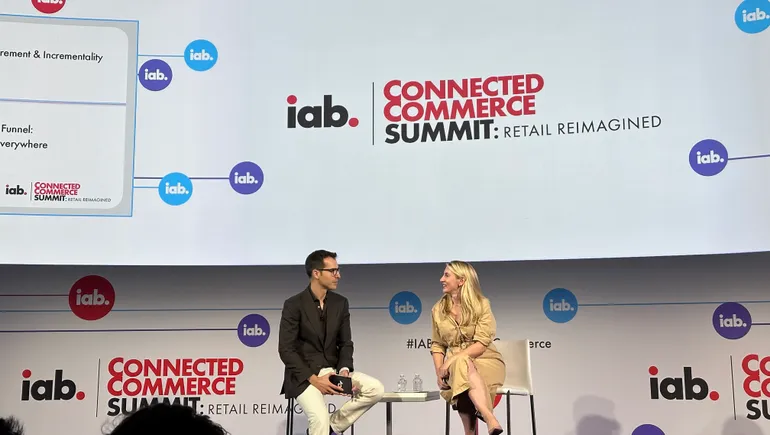NEW YORK — Commerce video is growing into an impactful and entertaining way for retailers to connect with shoppers and influence purchases.
Retailers are tapping commerce video more than ever, with 70% of digital video advertisers using it. As the fastest-growing advertising channel, it is projected to increase to $63 billion in 2024, almost 80% faster than the total media market, according to the Interactive Advertising Bureau’s “Unconnected Commerce” report released two weeks ago during its Connected Commerce Summit.
But in an interview, Chris Bruderle, IAB’s vice president of industry insights and content strategy, noted that there is a risk of commerce video turning customers away if it is not effectively produced and run.
While shoppable videos and connected TV (CTV) are the most common versions of commerce video that grocery retailers use, commerce videos have a “clear call-to-action,” such as “sign up,” “learn more” and “shop now,” that aim to make viewers purchase a product, according to IAB.
The benefits of a successful shoppable video ad or CTV video can be exponential, but IAB reports that “advertisers are overconfident in the effectiveness of their commerce video strategies.”
Around 70% of consumers reported feeling annoyed or negative toward commerce video ads on a monthly basis, and one-third felt that way at least weekly, according to the report. And this annoyance from consumers is no small matter.
Two-thirds of consumers who are annoyed by commerce video ads “take actions that harm brand metrics, such as switching to competitors, complaining on social media, or unsubscribing from services or newsletter,” the report said, meaning that retailers need to have a clear understanding of how to best connect with their customers through their phones and televisions.
“Brands like to go to market using digital video in a specific way, and they have their tried and true media plans and marketing strategies that work,” Bruderle said. “But at the same time, consumers have preferences regarding how they want to be messaged and engaged, particularly with digital video — and do those things match up?”
According to Bruderle, there are five key considerations that grocers and advertisers should take into account to ensure ads are enjoyable:
- Make sure the video is at the “top of the funnel” and takes shoppers through the full “purchase journey.”
- Don’t assume push ads can only appear when viewers are in “shopping mode,” such as actively putting items in an online basket or are near a store. Social media platforms like TikTok and Instagram Reels can encourage them to make purchases 24/7.
- Consumers actually prefer longer ads with more information like QR codes, store locations and store website links.
- Be careful when balancing frequency and repetitiveness, as being overly repetitive is a top annoyance for consumers and leads to frustration. Retailers should test and learn what their customers’ preferences are.
- Social media influencer and content creator partnerships are valuable, but only 40% of companies creating commerce videos on social media are currently leveraging them.
During IAB’s Connected Commerce Summit, TikTok executive Adolfo Fernandez said 61% of people who engage with TikTok shop on the app as well, and, moving forward, the social media platform aims to create a seamless path for purchasing.
Fernandez, a global director at the company who oversees product strategy and operations, also stressed how retailers can better tap content creators who can create their own “bundles” or products they like that retailers can then use.
Consumer perception of content isn’t the only area grocers need to focus on when building out commerce video initiatives.
Since Albertsons Media Collective announced building out its CTV strategy in June, Evan Hovorka, the company’s vice president of product and innovation, said in an interview he has noticed friction between agencies and retailers, noting that communication about media budgets between clients, agencies and Albertsons’ own team could be better.
“CTV is just another version of linear TV, [but] it does open the door for more data-driven targeting and measurement and creating. And so if retail media is going to find a way to provide value in that very agency-friendly world, we have to show up with the assets that CPGs care about,” Hovorka said.















